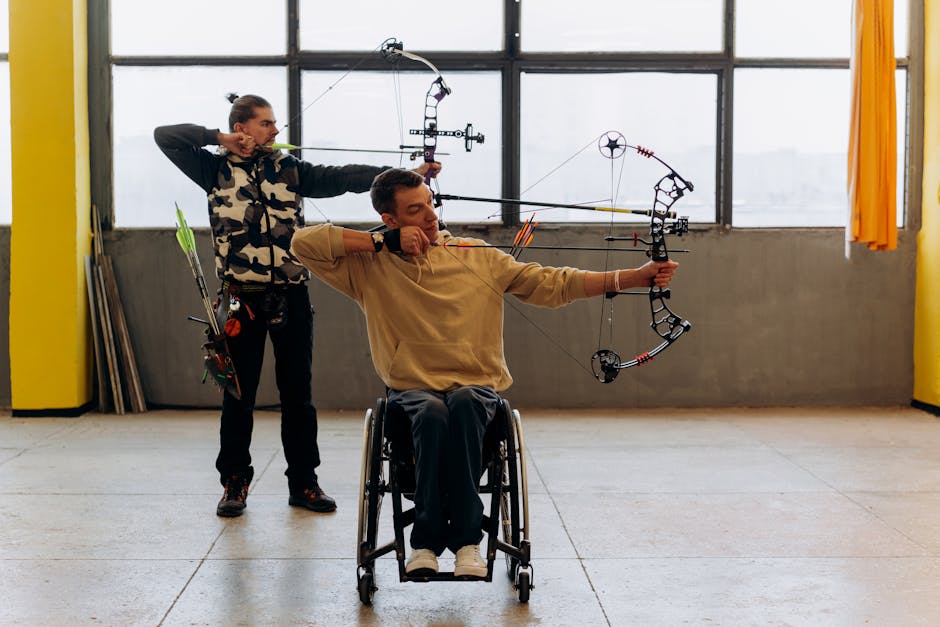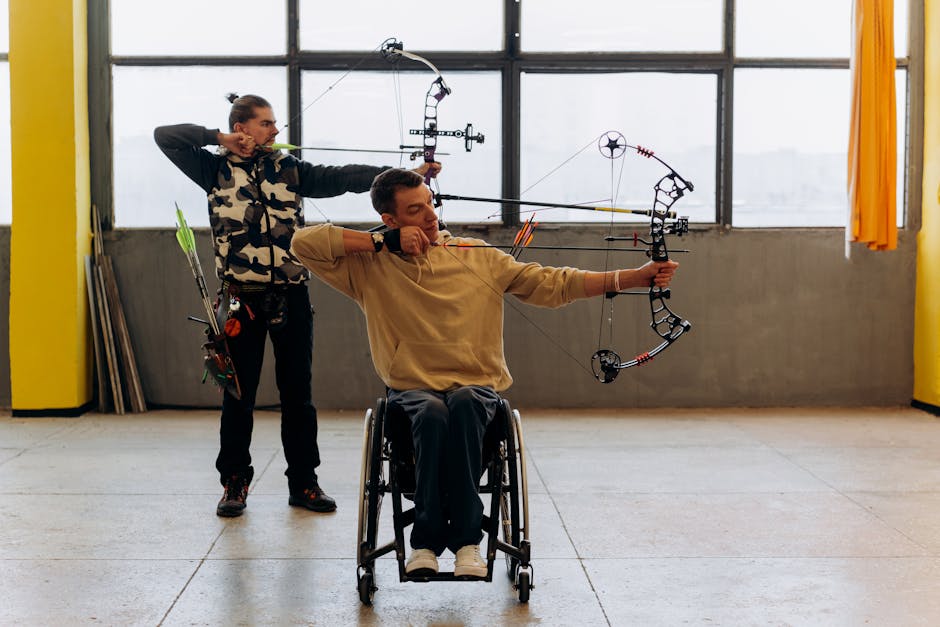Total Archery Challenge Accidents: Understanding Risks, Prevention, and Safety Measures
Total Archery Challenge Accidents: Understanding Risks, Prevention, and Safety Measures
The Total Archery Challenge (TAC) is a popular and exciting activity, but like any sport involving projectile weapons, it carries inherent risks. Understanding these risks, implementing preventative measures, and emphasizing safety protocols are crucial to ensuring a fun and accident-free experience. This comprehensive guide delves into the various types of accidents that can occur at TAC events, examines their causes, and proposes strategies for minimizing the likelihood of such incidents.

Types of Accidents at Total Archery Challenge Events
Accidents at TAC events can range from minor injuries to serious incidents. These can broadly be categorized into:
- Arrow-related injuries: This is the most common type of accident. It can include:
- Target misses: Arrows missing the target and striking participants or bystanders.
- Ricochets: Arrows bouncing off hard surfaces and changing trajectory.
- Equipment malfunction: Broken bows, faulty arrows, or loose nocks causing unexpected arrow release.
- Improper arrow handling: Dropping arrows, handling arrows carelessly, or pointing arrows at people.
- Physical injuries: These can occur due to:
- Falls: Tripping or slipping on uneven terrain.
- Collisions: Bumping into other participants or equipment.
- Overexertion: Muscle strains or injuries from repetitive movements.
- Equipment-related accidents: Beyond arrow and bow issues, these include:
- Target stand collapses: Unstable or poorly maintained target stands.
- Trip hazards: Obstacles or loose items on the range.
Causes of Accidents at Total Archery Challenge
Several factors contribute to accidents at TAC events. These include:

- Lack of proper training and instruction: Inadequate training on safe archery techniques, range etiquette, and emergency procedures.
- Negligence and disregard for safety rules: Ignoring safety protocols, such as nock-pointing, or failing to follow range commands.
- Inadequate supervision: Insufficient supervision, especially for younger or less experienced archers.
- Poor range design and maintenance: Inadequate spacing between shooting lanes, lack of proper backstops, or poorly maintained equipment.
- Unsafe equipment: Use of damaged or improperly maintained bows, arrows, or other equipment.
- Intoxication: Alcohol or drug use impairing judgment and coordination.
- Environmental factors: Adverse weather conditions, such as strong winds or rain, that can affect arrow trajectory.
Preventing Accidents at Total Archery Challenge
Preventing accidents requires a multi-faceted approach:
Pre-Event Preparation:
- Thorough training: Participants should receive comprehensive training on safe archery techniques, including proper stance, aiming, release, and arrow handling. This should include instruction on range safety rules and emergency procedures.
- Equipment inspection: Ensure all equipment is in good working order before the event. Bows should be properly tuned, arrows should be free of damage, and safety releases should be functional.
- Range setup and maintenance: The range should be designed and maintained to maximize safety. This includes adequate spacing between shooting lanes, sturdy backstops, clear signage, and the removal of any trip hazards.
During the Event:
- Strict adherence to safety rules: All participants must strictly adhere to the established safety rules, including nock-pointing, maintaining awareness of their surroundings, and following range commands.
- Adequate supervision: Sufficient and trained supervisors should be present to monitor participants and ensure adherence to safety protocols. This is particularly critical for groups with younger or less experienced archers.
- Emergency response plan: A well-defined emergency response plan should be in place, including procedures for dealing with injuries, equipment malfunctions, and other unexpected events.
- Weather monitoring: Events should be postponed or cancelled if weather conditions are unsafe, such as strong winds or storms.
Post-Event Review:
- Accident investigation: Any accidents or near misses should be thoroughly investigated to identify contributing factors and implement corrective actions.
- Safety improvement plan: Based on the accident investigation, implement a safety improvement plan to address any identified weaknesses.
The Role of Total Archery Challenge Organizers
The organizers of Total Archery Challenge events bear a significant responsibility for ensuring the safety of participants. This includes:
- Providing comprehensive safety training: Organizers must ensure that all participants receive adequate training on safe archery practices and range etiquette.
- Implementing and enforcing strict safety rules: Clear and comprehensive safety rules must be implemented, and staff must diligently enforce these rules.
- Maintaining a safe shooting range: The range must be designed and maintained to minimize risks, including adequate backstops, clear shooting lanes, and the removal of any potential hazards.
- Providing adequate supervision: Sufficient and well-trained staff should be present to monitor participants and respond to emergencies.
- Developing and implementing an emergency response plan: A comprehensive emergency response plan should be developed and regularly practiced to ensure efficient response to accidents or emergencies.
- Using quality equipment: Organizers should ensure that all equipment provided is in good working order and meets safety standards.
- Regularly reviewing safety procedures: Safety procedures should be regularly reviewed and updated to ensure their effectiveness in preventing accidents.
Personal Responsibility in Total Archery Challenge
While organizers play a vital role, personal responsibility is also crucial. Archers should:

- Be aware of their surroundings: Always maintain awareness of other archers and bystanders.
- Follow all safety instructions: Adhere strictly to all safety instructions given by instructors and range officials.
- Use equipment correctly: Ensure that their equipment is in good working order and use it correctly.
- Never point an arrow at anyone: This is a fundamental safety rule that must always be followed.
- Maintain control of their arrows: Always know where their arrows are and handle them carefully.
- Report any hazards: Report any hazards or unsafe conditions to range officials immediately.
By understanding the risks, implementing preventative measures, and emphasizing safety protocols, we can ensure that Total Archery Challenge events remain fun, exciting, and, most importantly, safe for everyone involved.





